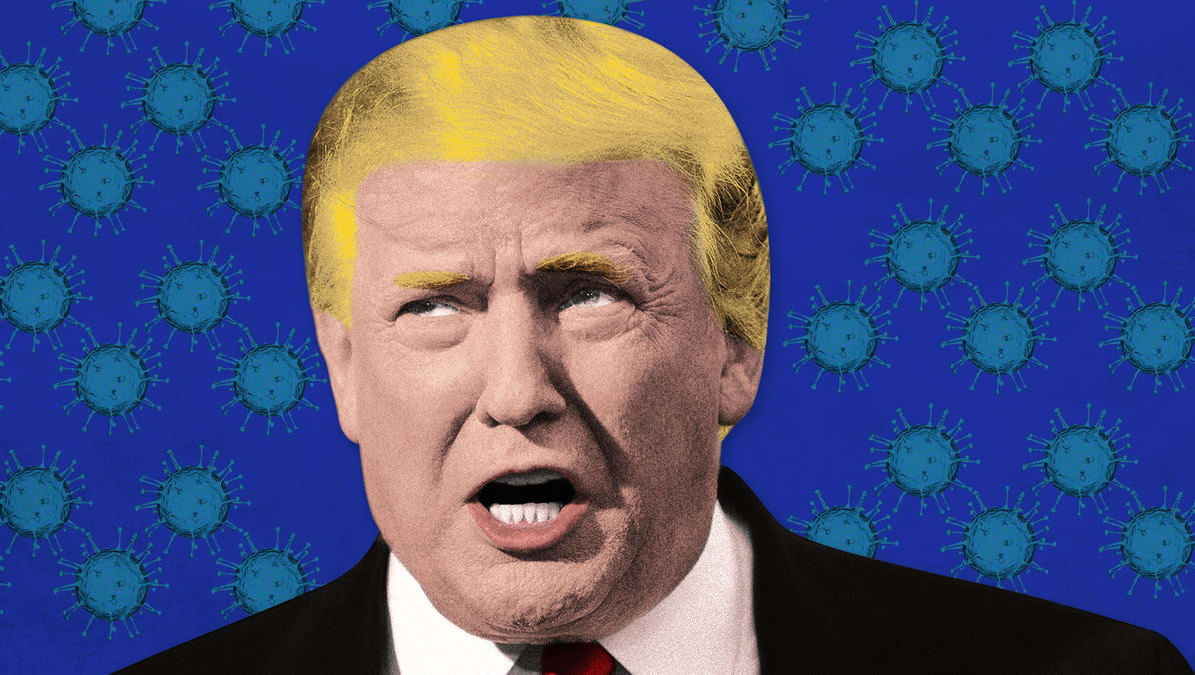On a call with the nation’s governors Tuesday, Secretary of Education Betsy DeVos chastised local officials for doing “next to nothing” to provide academic services to students and demanded they reopen schools in the fall regardless of the state of the COVID pandemic.
The issue, DeVos stressed at one point, was merely a matter of calculated risk, nothing all that different from those taken by an astronaut heading into space.
“Education leaders really do need to examine real data and weigh risk,” DeVos said. “They already deal with risk on a daily basis. We know that risk is embedded in everything we do. Learning to ride a bike, to the risk of getting in a space capsule and getting shot off in a rocket into space.”
The remarks by DeVos were part of a larger push on Tuesday by top Trump officials to make the case for school reopenings amid growing health concerns by doctors, scientists and state and local officials. But they also resembled something larger about the president’s approach to a virus that has crippled the country and, in turn, his presidency. Months into the pandemic, the administration has settled into a phase of acceptance even as the coronavirus continues to infect thousands of people each day and overwhelm hospitals in the south and southwestern parts of the country.
It’s been six months since the pandemic first began, with more than 3 million people contracting the virus and an estimated 133,000 people having died from it. In that time, officials and advisers working with President Trump’s coronavirus teams say the administration’s response approach has changed drastically, especially in the last several months.
Officials and advisers working on the administration’s response describe the coronavirus task force working groups, primarily filled with more junior officials across several federal agencies, as desperately trying to engage with local and state communities to contain new outbreaks and ensure the safety of those most vulnerable. But those efforts have also been stymied, according to three officials and two outside advisers, in large part because they have to constantly scramble to stay on message with President Trump, who has a habit of ad-libbing on Twitter or in other public forums about the virus.
“There are people who are trying to do the right thing and they aren’t always allowed to,” one individual who works with the president’s coronavirus task force said. “I feel like they’re trying to thread a needle. That’s hard to do when there’s been no national strategy around masks, gatherings...that other countries have that have allowed them to better prepare for the fall.”
Those scrambles include adjusting to Trump’s demands that more attention be placed on re-opening the economy and on positive developments in the fight against the virus. In the past three weeks, Trump has privately griped that Dr. Anthony Fauci, the country’s leading infectious-disease expert, is “very good at scaring people,” according to a source with direct knowledge. And on Tuesday, he made it clear that he harbored no internal debate about the virtue of getting school’s reopened in the midst of a pandemic.
"Now it’s time to be open. Now it's time to stay open," the president declared at a separate event on Tuesday geared around schools. "We're not closing. We'll never close.”
But those scrambles have also been organizational in nature. Several officials told The Daily Beast that the coronavirus task force has been reorganized twice in the last three months, and it has gone from focusing on the delivery of vital personal protective gear and testing supplies to ensuring the federal government is prepared for the upcoming flu season. One senior CDC official said they were recently assigned to the task force to help a working group that deals with data around coronavirus cases, deaths and hospitalizations. Other officials said there are several vacancies on a slew of different working groups and it’s unclear when those would be filled.
Part of the newly revamped task force seems particularly focused on ensuring the administration has tallied the death and case counts accurately. One individual with knowledge of the conversations said there is interest in analyzing whether the case surveillance data matches the death certificate mortality data and to find the instances where states may have over-counted.
In public, though, the task force is focused on traveling to hotspot areas to speak with local officials and encourage the community that it is still possible to move forward with reopening as long as they take steps to contain the virus. Vice President Mike Pence and Dr. Deborah Birx, the task force coordinator, have delivered remarks to that extent.
Behind closed doors, Birx has continued to stress her concerns about rising positivity rates and case numbers and the importance of states continuing to work with the federal government to increase testing capacity. On the private call with governors Tuesday, Birx said her team had dispatched individuals to hot-spot cities to help certain districts and advised some local officials to pause reopening. She said she is planning on traveling next week to Georgia and South Carolina, among other southern states where case numbers are on the rise.
Top officials on President Trump’s coronavirus task force have oscillated in recent weeks between raising the alarm about the handful of states experiencing massive upticks in positivity rates and hospitalizations and downplaying those same statistics. On calls with the nation’s governors, according to recordings previously obtained by The Daily Beast, Pence has downplayed the numbers, instead focusing on the national picture and the overall mortality rate. But on Tuesday’s call, he acknowledged that there “are many southern states [that] have seen a rise in cases."
The mixed messaging has spilled over into other parts of the administration, too, particularly when it comes to testing. Birx and Pence have both publicly and privately urged states to continue to ramp up testing and ask the federal government for assistance. But President Trump has consistently pushed the message that testing is bad for optics—that simply stopping it would result in fewer actual cases. And on Tuesday’s governors call, Department of Health and Human Services Secretary Alex Azar told governors that when it came to reopening schools, testing was “not necessary” and said it was a “tool” that states could use to keep students safe if they do choose to allow them back into the classroom this fall.
The emphasis on learning to live with COVID—and downplaying testing concerns along the way there—is a messaging push that, three administration officials told The Daily Beast, had been in the works for weeks. One of those officials insisted it was not fueled by a sense of despair or “defeatism,” but rather by a belief in “American resilience” in the face of great death and tragedy.
But for public health experts, the push has an obvious flaw, one already exhibited during the past half year: opening too quickly is part of what led to new outbreaks.
“We very clearly predicted that if you were cautious and slow you were going to do better. In hindsight, our prediction was true,” said Dr. David Rubin, the director of PolicyLab, a group of doctors and scientists from Pennsylvania that brief the White House’s coronavirus task force on data modeling.
“We’re in limbo right now,” Rubin said. “Everything was predicated on getting our counts down. And there is a sense of like, ‘ok, what do we do now?’ We haven’t really thought about what if there is an epidemic that happens in August. That hasn’t been part of the conversations.”
Through it all, Trump has largely lost patience, regularly complaining that public-health professionals who contradict or complicate his declarations of victories and alleged economic rebirth are causing undue panic. In an interview with Axios last month, he said the country had to “get back to business.” And on the Fourth of July, he falsely stated during a speech that 99 percent of all coronavirus cases are “totally harmless.” Pence, too, has focused some of his latest remarks emphasizing economic considerations over public health ones. In the call with the governor’s Tuesday, the vice president noted that he’d recently read a report by the Council of Economic Advisors—a group of economists who advise the president—that said if every school closed it would cost the U.S. economy tens of billions of dollars.
Meanwhile, the Trump-Pence re-election campaign seems to think the rush to reopen schools during an ongoing pandemic will make for some good electoral politics.
“President Trump understands education is the single greatest equalizer in our society and that we need to get children back into the classroom so they do not fall behind and parents can return to work,” Trump 2020 spokeswoman Samantha Zager said in a statement to The Daily Beast on Tuesday. “Joe Biden puts his loyalty to the teachers union ahead of the well-being of students and families in America.”


